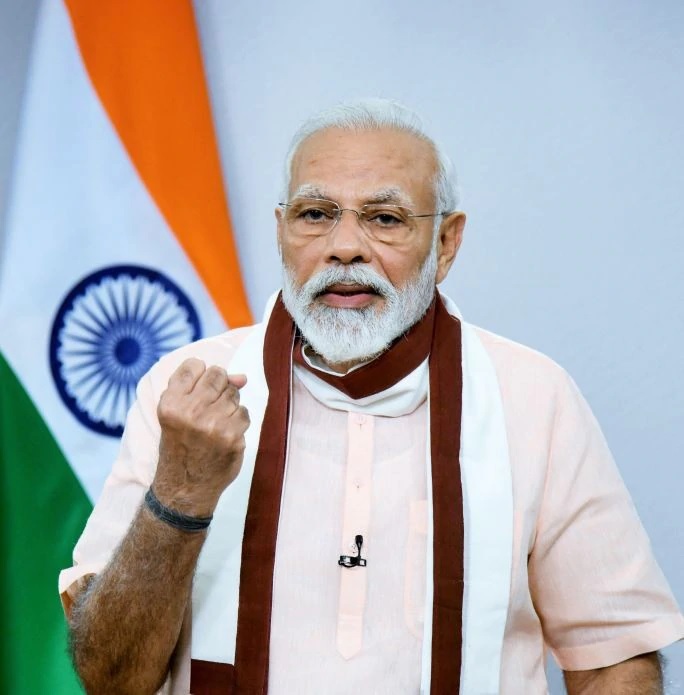The economic package announced by the Modi government has a strong rural bias that could help decongest cities. This is a pragmatic approach in the context of how the virus spreads. The virus is known to spread most among dense urban populations. Shared living spaces, where the poor sometimes reside, are most at risk. Nor can this strategy help increase rural incomes during the lockdown, it will address the uneven growth trajectory, with the agricultural sector lagging behind, that the Indian development model has witnessed. While the 1991 reforms liberalized India industry, it did not address agriculture and the sector continues to have laws and policies that have prevented its growth.
The next few months could be a difficult time for urban dense areas. The coronavirus could spread more easily in such spaces. This could result in urban clusters being declared hotspots and being locked down. As we move from a nationwide shutdown to a strategy of localized tight containment zones to contain the virus, the probability of a lockdown in urban working spaces is higher.
The economic package appears to be based on the belief that people will go back to their villages and try to find work there. For their survival production in rural India need to be boosted. Schemes for dairy, infrastructure, fishery, herbs, micro food units and farms have been announced, in addition to freeing up farmers access to markets.
The government would spend Rs 3500 crore for foodgrain supply to migrants and Rs 1500 crore through interest subvention of 2% for Shishu loans under the Mudra Scheme. The government announced relief for street vendors, through a special credit facillity of Rs 5,000 crore.
However, a much bigger employment boosting measure in the government’s stimulus package was an increased allocation of Rs 40000 crore to MNREGA. In another scheme the government would spend Rs 6,000 crore towards employment generation in forest areas.
In addition to changing personal and social behavior, the economy might change, if the virus is here to stay. Looking forward, if there is no universal access to a COVID-19 vaccine for another 18-24 months, then business in sectors and locations which are safer is likely to do well, while those at high risk may not be able to sustain operations. While liquidity is today one of the biggest obstacles to revival of business, we may find that even if credit is available, the possibility of another lockdown, of disrupted supply chains, of higher costs, and of unstable demand, may discourage many businesses from re-starting operations in dense urban clusters.
In contrast, the least risk of the spread of the virus and consequent lockdowns is in rural India where it is naturally easier to have physical distancing and outdoor work. This may shift the focus from urban markets to rural markets for both demand and production. Livestock, fisheries, dairy, vegetables, fruit and food processing are more labour intensive and high value yielding. After many decades of neglect in R&D, lack of market access, on-off policies for exports, and market distortions, the present adversity may be a timely opportunity for this sector. The sector would need support of a suitable policy framework and reforms in pricing policy, tax, market access, credit and rural infrastructure like warehouses and cold storages. The next two years or so of how we learn to live with corona virus can redesign the economy towards safer and more sustainable production and consumption with agriculture and the rural economy as its strength, rather than its weakness.
From the economic package announced it seems that the government is trying to decongest cities. No big urban work fare program or an unemployed assistance program was launched. Not only would this not have been affordable, it might also not have been pragmatic if urban clusters were at high risk of becoming containment zones.
Right from the first Gareeb Kalyan Program, or the first stimulus package, the focus has been assistance to rural areas, even though at that time migrant workers were being asked to stay where they were in cities. Now that provisions are being made for them to return to villages, the government needs to step up its efforts to give them incomes in rural areas through agricultural reforms.
Agricultural reforms
The agricultural reforms and schemes in the economic package seeks to give a push to agriculture to increase diversification towards higher value products. Through legislative reform the government seeks to do for agriculture what the 1991 reforms did for industry. Freeing up agricultural markets and greater access to markets for farmers lies at root of this strategy. The Finance Minister announced that the government will amend the Essential Commodities Act (ECA) of 1955, bring a Central legislation to allow farmers to sell their produce to anyone, outside the APMC yards, create barrier free inter-state trade and enact a legal framework for contract farming. These will remove many restrictions on agriculture that have plagued Indian agriculture for many decades.
Some of the reforms, such as the promised laws on agriculture that the government has promised to enact such as an amendment to the Essential Commodities Act, a law that would allow contract farming and a centre that would remove barriers to interstate trade and commerce and create a national food market, would be game changers. Many governments have talked about these laws but no one has had the political courage to enact them. If the government is able to push through the legal changes then the liberalisation of agriculture would be akin to the 1991 liberalisation of Indian industry.
The measures announced for farmers in the economic package included Rs 2 lakh crore of concessional credit and Rs 30,000 crore working capital funding through NABARD. The FM announced the setting up of Rs 1 lakh crore agriculture infrastructure fund for financing projects relating to cold chains, storage infrastructure, strengthening of fisheries value chain through setting up of the Pradhan Mantri Matsya Sampada Yojana are expected to yield outcomes in the next few years. Rs 500 crore and Rs 4,000 crore were announced to be spent on supply chain disruptions and on promoting herbal cultivation. Other measures including for control of animal disease, development of animal husbandry infrastructure, micro food enterprises were also announced. Finally, for MGNREGA the allocation was increased by 40,000 crore.
If the next two to three years are genuinely devoted to increasing rural incomes by diversification, modernisation and liberalisation of Indian agriculture, India could become a world leader in the production of fresh farm produce, herbs, organic fruit and vegetables.
By now it is understood that the fight against the novel coronavirus is not a short fight. Our understanding about the spread of the virus is evolving everyday with data and research. The alternative strategy of trying to sustain migrant workers in urban areas through transfer payments would not only have been unaffordable, it would have had adverse health implications.
(The author is an economist and a professor at the National Institute of Public Finance and Policy. Views are personal)
Image Source: https://images.app.goo.gl/sP4MuuCgfLGfKBoY9
(The views expressed are the author's own and do not necessarily reflect the position of the organisation)


